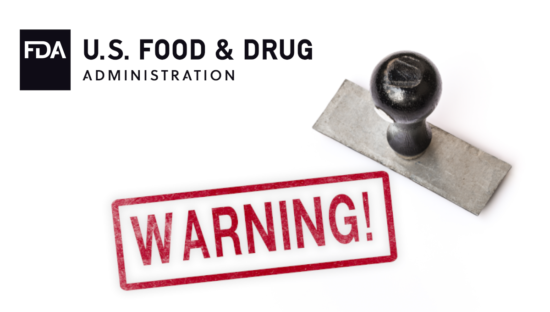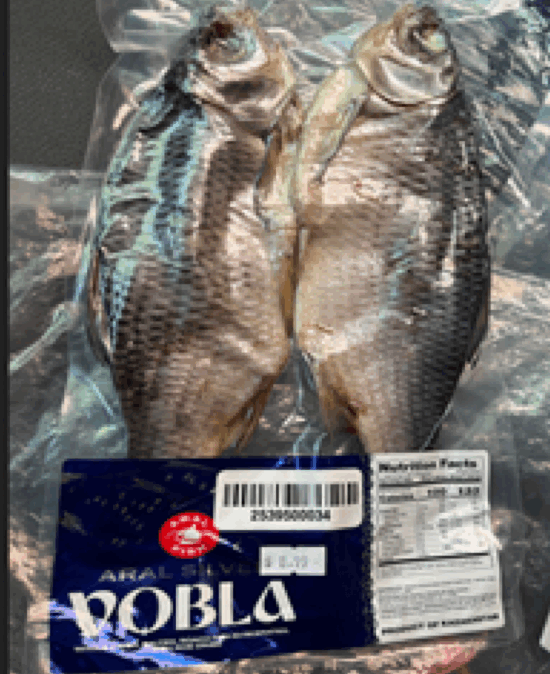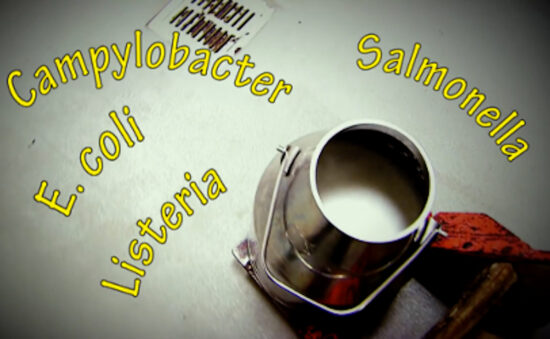As part of its enforcement activities, the Food and Drug Administration sends warning letters to entities under its jurisdiction. Some letters are not posted for public view until weeks or months after they are sent. Business owners have 15 days to respond to FDA warning letters. Warning letters often are not issued until a company has been given months to years to correct problems. The FDA frequently redacts portions of warning letters to protect companies.
Chaohu Daxin Foodstuffs Co. Ltd.
Chaohu Shi Anhui Sheng, China
During a July 22-23, 2024, inspection of your seafood facility, the U.S. Food and Drug Administration found significant violations of the seafood Hazard Analysis and Critical Control Point (HACCP) regulation, and the Current Good Manufacturing Practice, Hazard Analysis, and Risk-Based Preventive Controls for Human Food rule. At the conclusion of the inspection, FDA investigators issued an FDA Form 483, Inspectional Observations. You provided responses to the inspection on August 27, 2024, describing corrective actions taken by your firm. Our evaluation of your response revealed it was not adequate, as further described in this letter.
In accordance with regulations, failure of a processor of fish or fishery products to have and implement a HACCP plan that complies with this section or otherwise operate in accordance with the requirements renders the fish or fishery products adulterated within the meaning of section 402(a)(4) of the Federal Food, Drug and Cosmetic Act (the Act), 21 U.S.C. § 342(a)(4). Accordingly, your ready-to-eat (RTE) cooked crawfish products, are adulterated, in that they have been prepared, packed, or held under conditions whereby they may have been rendered injurious to health.
Your significant violations are as follows:
1. You must have a HACCP plan that at minimum lists the critical limits that must be met, to comply with 21 CFR 123.6(c)(3). A critical limit is defined in 21 CFR 123.3(c) as the “the maximum or minimum value to which a physical, biological, or chemical parameter must be controlled at a critical control point to prevent, eliminate, or reduce to an acceptable level the occurrence of the identified food safety hazard.” However, your firm’s HACCP Plan for Frozen Cooked Crayfish Tailmeat product lists critical limits that are not adequate to control the identified food safety hazards. Specifically:
a. At the “(redacted)” critical control point (CCP), the critical limit of “(redacted) temperature: (redacted) degreesC; Critical limit (CL): (redacted) temperature (redacted) degreesC; (redacted) machine (redacted)HZ.” is not adequate to control pathogenic bacteria survival through cooking. FDA recommends you establish critical limits for the minimum or maximum values for the critical factors established by a scientific study, which may include length of the cook cycle, speed of the belt for a continuous cooker, temperature of the steam or water used for cooking, initial temperature of the product, and any other critical factors that affect the rate of heating the product. Alternatively, you may establish a value for the end product internal product temperature (EPIPT), established by a scientific study.
Furthermore, the monitoring procedures for ensuring appropriate temperature are not adequate because it does not include continuous monitoring of cooking temperature, belt speed after any adjustments, and measurement of crawfish after every raw material lot change. Additionally, the conveyor belt speed frequency values recorded during the cooking process were not consistent with the speed and time values listed in the HACCP plan.
We acknowledge receipt of your response to the FDA-483 received by our office on Aug. 27, 2024. Your response provided a list of scientific literature; however, the literature does not support that your critical limit provides a 6D process. Your firm should validate your cook process to ensure the cook time and temperature are adequate to control pathogens such as Listeria monocytogenes.
b. At the “(redacted)” CCP, the critical limit of “(redacted)” is inadequate because it does not address chemical contaminants such as pesticides.
Furthermore, you failed to implement your monitoring procedures of reviewing the supply certificate for exported crawfish for each batch received when you did not have supply certificates for seven of the suppliers of crawfish for batch # (redacted).
We acknowledge receipt of your response to the FDA-483 received by our office on Aug. 27, 2024. Your response provided a certificate from the Anhui Province Fisher Association that the live crawfish supplied from your supplies come from the Zhegao Town, Chaohu city’s safe freshwater areas. This certification is not adequate because it does not address the standards by which these areas are safe, nor do they address established United States federal tolerance and action levels.
Your response also provided a test report on an intact sample of (redacted)g of raw material crawfish for analysis conducted on July 29 through Aug. 2, 2024. It is unclear whether this sample meets FDA’s recommendation for verification procedures, which includes the collection of a representative number of samples of the raw material, in-process product, or finished product.
2. You must monitor sanitation conditions and practices during processing with sufficient frequency to ensure compliance with current good manufacturing practice requirements in 21 CFR Part 117 Subpart B, to comply with 21 CFR 123.11(b). However, your firm did not monitor condition and cleanliness of food contact surfaces and protection of food and food contact surfaces from adulteration, with sufficient frequency to ensure compliance with the current good manufacturing practice requirements in 21 CFR Part 117 Subpart B, as evidenced by:
a. On July 22, 2024, the white conveyor belt that comes into contact with RTE cooked crawfish was observed with multiple cracks, cuts and crevices. The same conveyor belt was observed with heavy colored stains and dark patches after cleaning.
b. On July 22, 2024, condensate build-up was observed and dripping from the surfaces of the air conditioning unit in the peeling production workshop onto food contact surfaces during work in progress, from the surface of the air conditioning unit inside the temporary walk-in cooler onto uncovered baskets of RTE defrosted cooked crawfish semi-finished product.
We acknowledge receipt of your response to the FDA-483 received by our office on Aug. 27, 2024. Your response include photographs of the conveyor belt with new parts, but the adjacent conveyor belt appears to still be stained. Additionally, we cannot fully evaluate your corrective actions to condensate drip because you did not provide records, such as training or sanitation records, to demonstrate your change in practices.
The complete warning letter is available by clicking here.
(To sign up for a free subscription to Food Safety News, click here)



